Instagram content from public professional accounts is now searchable on Google and Bing. That includes Reels, carousels, image posts, and most importantly for ecommerce brands product-tagged posts.
If your brand is on Instagram already, this shift matters. Your content is now indexable in search, which means your social posts are being surfaced outside the platform. But they often do so without the structure, accuracy, or alignment that your Shopping campaigns and product feeds rely on.
If that disconnect isn't addressed, you risk showing outdated or incomplete product info, which leads to confusion.
Will Google understand your Instagram setup?
Instagram posts are visual-first and caption-light. But now they can appear in Google Search, just like product pages. Google is looking at:
- Public posts from Business and Creator accounts (18+ users)
- Captions, hashtags, and alt text
- Product tags (powered by your Meta Commerce catalog)
- Image and video metadata
- Public profile authority (follower count, engagement, etc.)
If that content is indexed, it becomes part of your search footprint. And if it's not properly aligned with your main product data, it's a visibility liability.
Instagram product tags reflect only the Meta catalog, which often isn't optimized for search:
- Product titles may get truncated or lose detail
- Linked PDPs can be outdated or inactive
- Prices may not match what's shown in your Shopping feed
Where this breaks for feed-driven brands
Let’s say you’re running PMax and Shopping campaigns on Google. Your performance depends on clean feed structure—product_type, GTINs, item_group_ids, etc.
Now imagine someone finds your carousel post with a product tagged from last season in Google Search. It ranks because your IG account is public and high authority. But the post:
- Features discontinued SKUs
- Shows outdated pricing
- Links to a broken or generic page
That user bounces. You lose the click and get a potential policy issue.
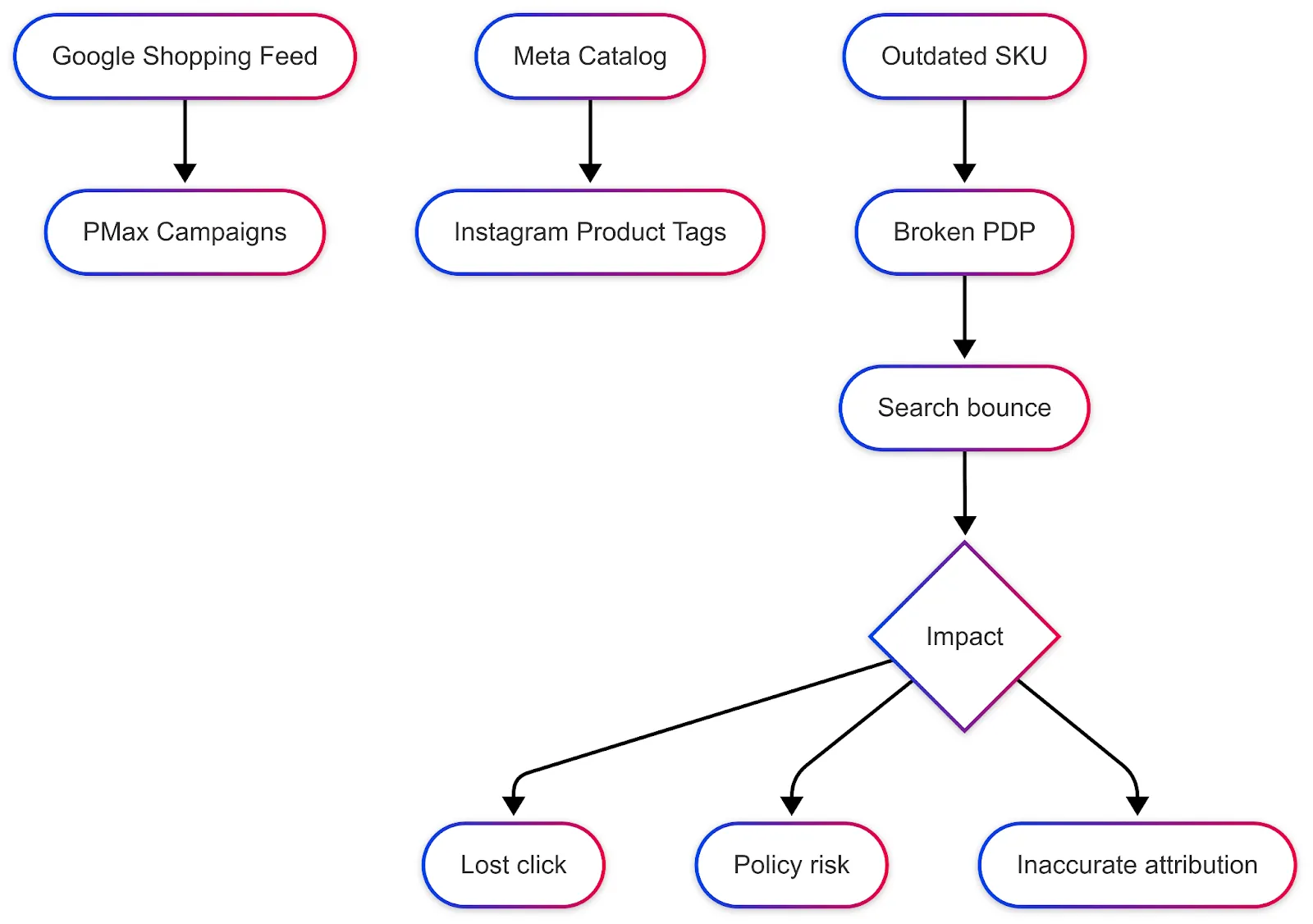
You can format data differently by channel. But the core values, such as title, price, and availability, must match.
Use your feed to power Instagram content
You already manage structured data for Google Merchant Center and Meta Commerce Manager. Instagram should follow the same logic.

Run a quick audit of your Meta Commerce catalog (you can do it in GoDataFeed). Focus on these key areas:
Title
- Lead with key product attributes
- Remove promo phrases
- Shorten long titles for Instagram display
Category Structure
- Use clean internal categories to support feed organization and campaign filters
- While not exposed directly on Instagram, this helps with catalog clarity
Custom Labels (for internal feed management)
- Use labels to organize products intended for Instagram
- This helps filter which SKUs get pushed to your Meta catalog (not shown to users)
Image URL
- Google indexes the actual image posted to Instagram
- Prioritize high-quality lifestyle imagery over studio thumbnails
Structured Social Posts Make Stronger Campaign Performance
Shopping and Commerce feed powers ads and it shapes the buyer journey across:
- Paid search (Performance Max, Smart Shopping)
- Social product tagging (Instagram, Meta Advantage+ ads)
- Organic product visibility (Google Search)
Now add this journey:
Search → Instagram Post → Branded Query → Shopping Ad Click
If the Meta version lacks clarity or alignment, this path breaks down. It muddies attribution. It introduces pricing inconsistency, and lowers ROAS.
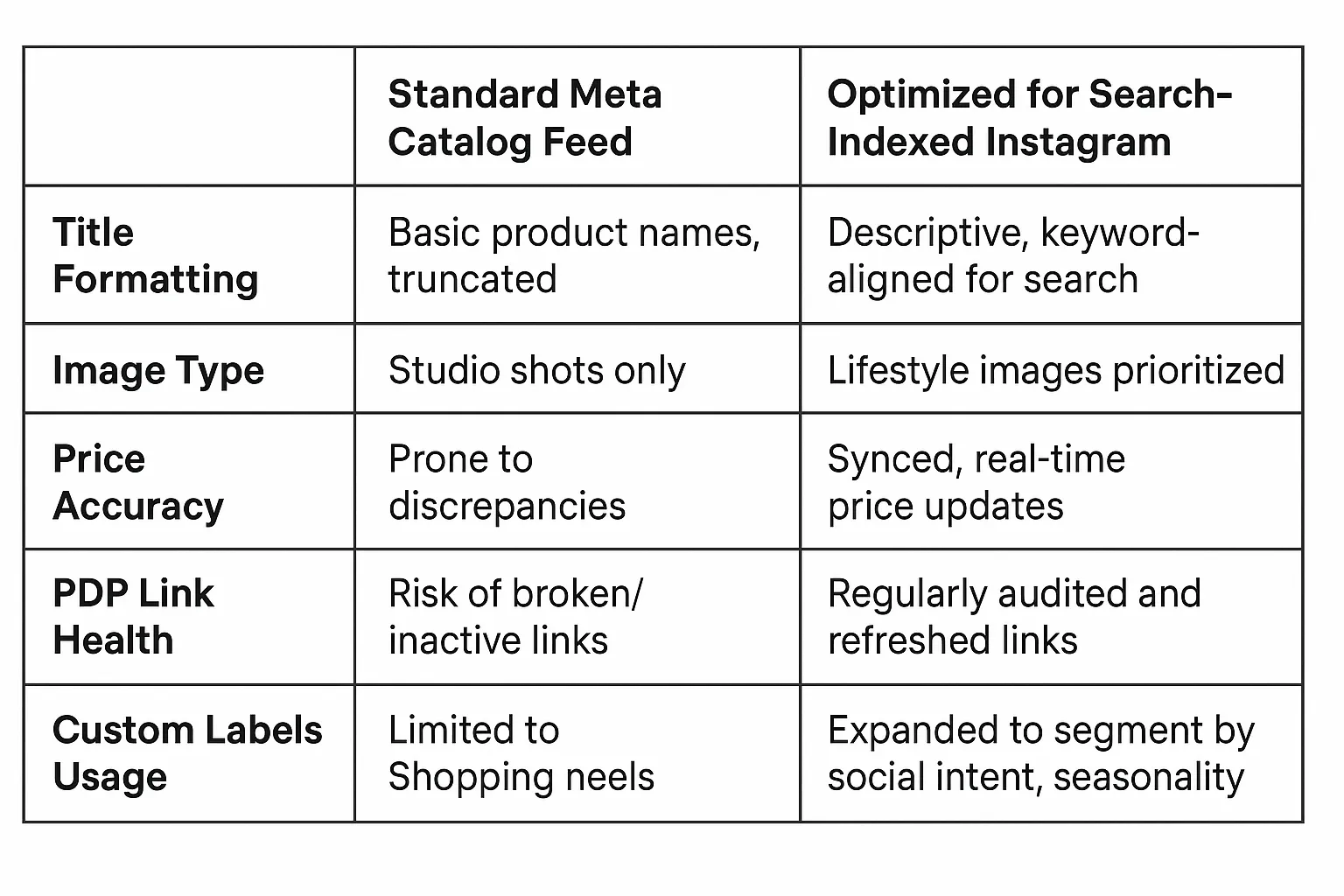
Turn Instagram Into a Discovery Channel
You’re not only trying to convert directly from Instagram search, but also:
- Control how your products appear in search
- Protect accuracy across surfaces
- Feed quality data into paid campaigns
Make Your Instagram search-ready:
- Push optimized product data into you content planning
- Use product naming in captions
- Link every post to its PDP with UTMs
- Use custom labels to control which SKUs get tagged
- Tag products intentionally in Meta Business Suite or your scheduling tool
- Monitor tagged product performance (views, clicks, engagement)
- Use feed data to optimize top-performing SKUs (creative, bids, variants)
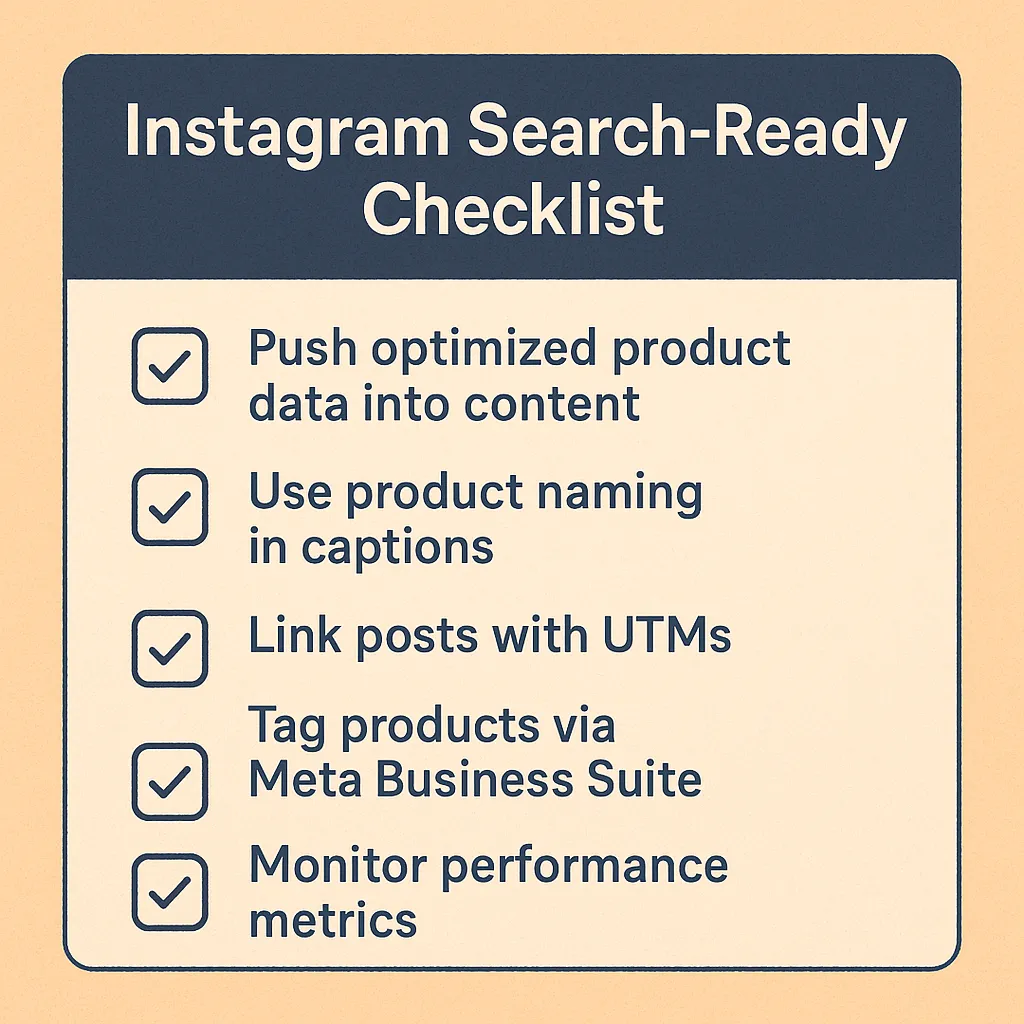
What to check regularly?
Meta Catalog Audit:
- Are product titles clear and aligned with Shopping?
- Are prices and availability up to date?
- Are PDPs active and relevant?
- Are images fit for high-visibility posts?
Search Check:
- Put in browser: site:instagram.com/yourbrand
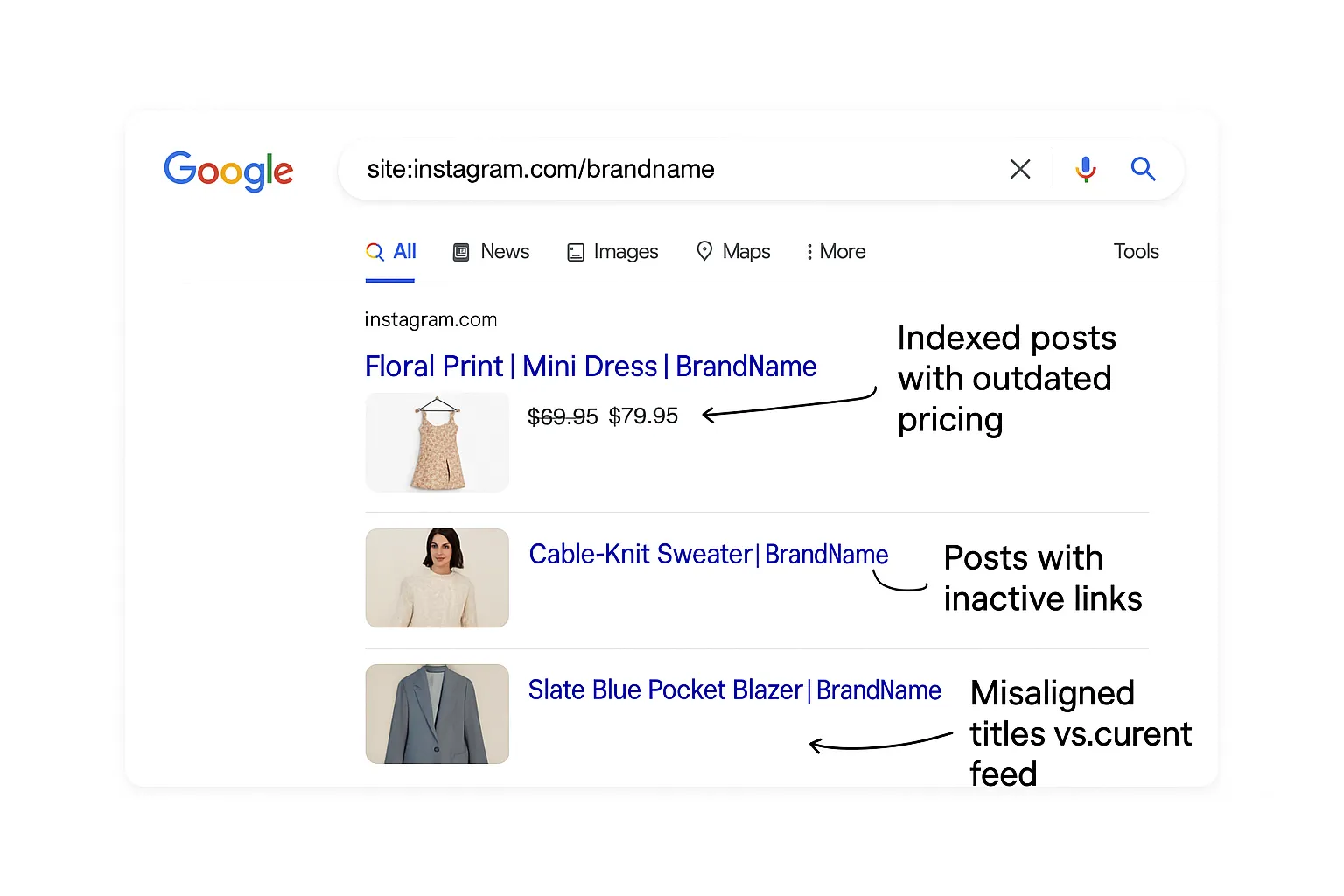
Instagram can be Googled now. Take the opportunity.
You don’t get to pick where discovery happens, but if Instagram is now showing up in Google Search, your Meta catalog just became part of your SEO strategy
Use GoDataFeed to clean up your Meta catalog, sync it with your Shopping feed, and take control of how your products show up anywhere they can be searched.
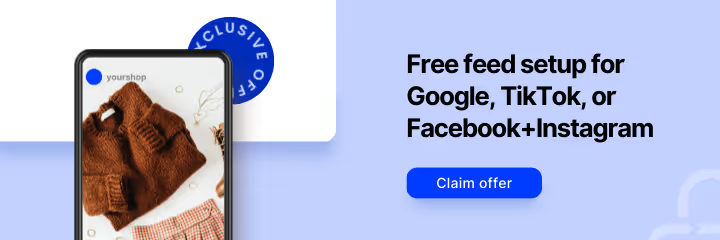





%20).webp)